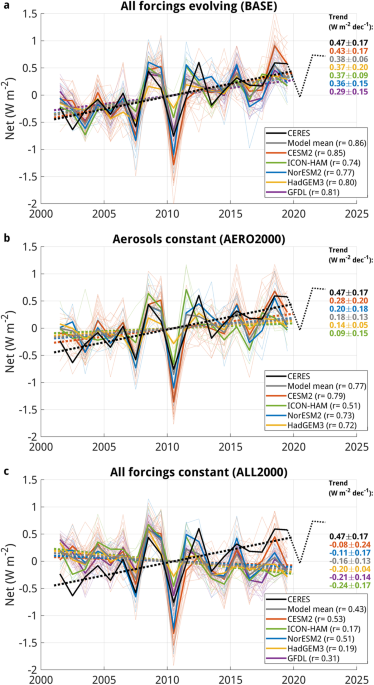Abstract
The Earth’s energy imbalance is the net radiative flux at the top-of-atmosphere. Climate model simulations suggest that the observed positive imbalance trend in the previous two decades is inconsistent with internal variability alone and caused by anthropogenic forcing and the resulting climate system response. Here, we investigate anthropogenic contributions to the imbalance trend using climate models forced with observed sea-surface temperatures. We find that the effective radiative forcing due to anthropogenic aerosol emission reductions has led to a 0.2 ± 0.1 W m−2 decade−1 strengthening of the 2001–2019 imbalance trend. The multi-model ensemble reproduces the observed imbalance trend of 0.47 ± 0.17 W m−2 decade−1 but with 10-40% underestimation. With most future scenarios showing further rapid reductions of aerosol emissions due to air quality legislation, such emission reductions may continue to strengthen Earth’s energy imbalance, on top of the greenhouse gas contribution. Consequently, we may expect an accelerated surface temperature warming in this decade.
We’re reducing the wrong pollution!!


